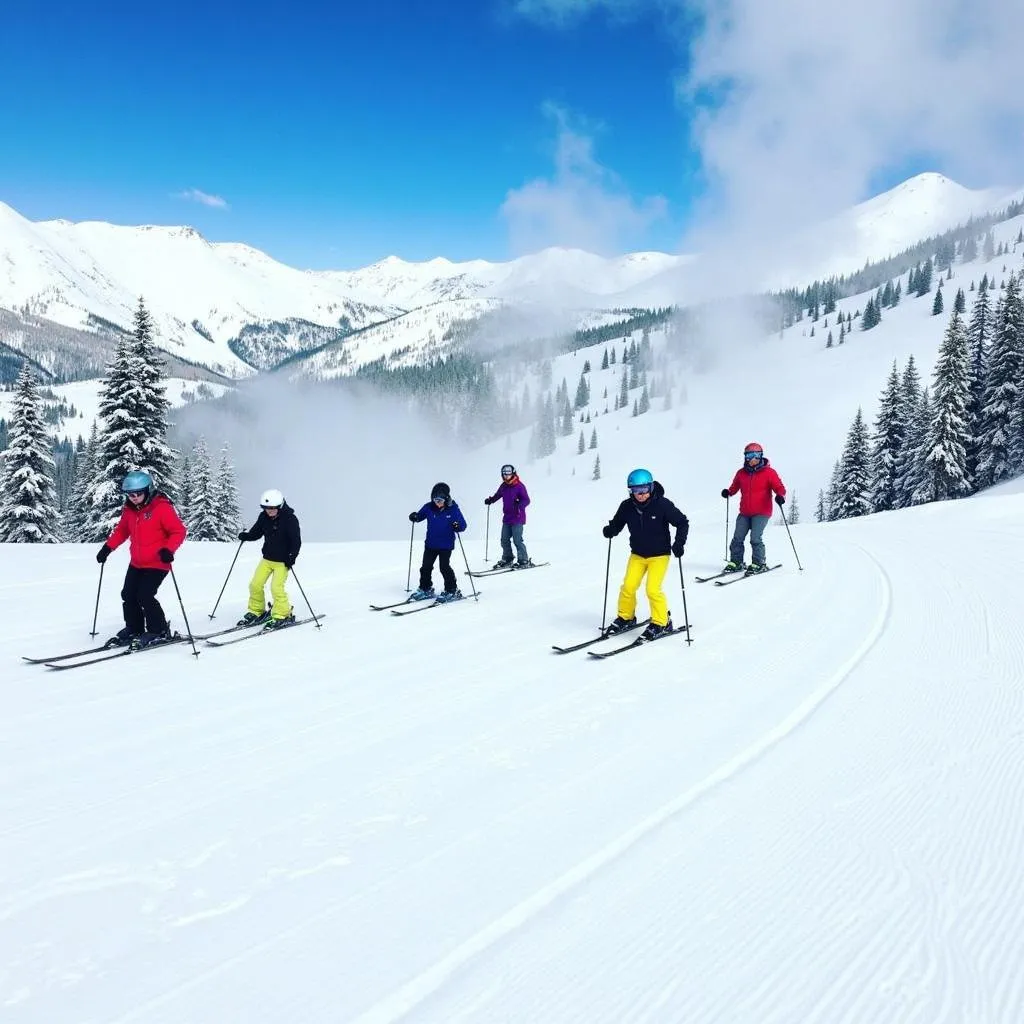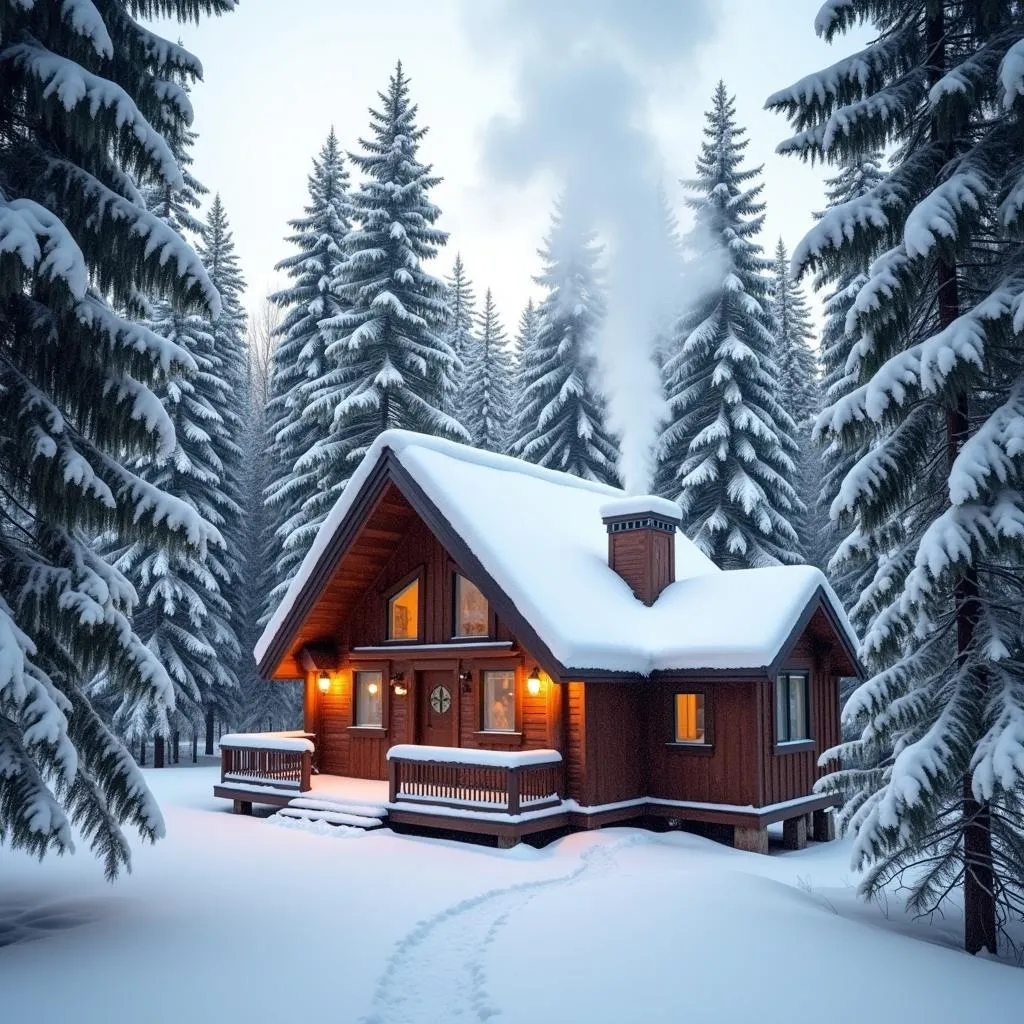Winter in Colorado typically arrives in late November, but the exact date can vary depending on several factors, including elevation and location. While the calendar may mark December 21st as the official start of winter, Colorado often experiences its first snowfall and freezing temperatures much earlier.
 Snowy mountains in Colorado during winter
Snowy mountains in Colorado during winter
Meteorological vs. Astronomical Winter
It’s important to distinguish between meteorological and astronomical winter. Meteorological winter, which aligns with the cycle of seasons based on temperature patterns, begins on December 1st and lasts until the end of February. On the other hand, astronomical winter, determined by the Earth’s tilt and position relative to the sun, starts on the winter solstice, typically around December 21st or 22nd, and ends on the spring equinox, around March 20th or 21st.
Factors Influencing Winter’s Arrival
Several factors can influence when winter truly arrives in Colorado.
- Elevation: Higher elevations tend to experience colder temperatures and snowfall earlier than lower-lying areas. Mountain towns like Breckenridge, Aspen, and Vail often see their first snow in October, while Denver, located on the plains, might not see snow until November or even December.
- Location: The Continental Divide, running north-south through Colorado, plays a significant role in weather patterns. The western slope generally receives more snow than the eastern slope due to the orographic effect, where moist air rises over the mountains, cools, and condenses into precipitation.
- Year-to-Year Variability: Weather patterns can be unpredictable, and some years might experience an early winter with significant snowfall in November, while others might have a milder start with warmer temperatures lingering into December.
 Skiers on a slope in Colorado
Skiers on a slope in Colorado
Preparing for Colorado’s Winter
Regardless of the exact date, it’s crucial to be prepared for winter in Colorado. This includes:
- Winterizing your home: Insulating windows and pipes, ensuring heating systems are functioning correctly, and stocking up on winter supplies like salt and shovels.
- Preparing your vehicle: Having your car winterized with appropriate tires, antifreeze, and an emergency kit is essential for safe driving in snowy and icy conditions.
- Planning for outdoor activities: If you plan to engage in winter sports like skiing, snowboarding, or snowshoeing, be sure to have the proper gear and clothing to stay warm and safe.
Enjoying the Colorado Winter Wonderland
While winter in Colorado brings its challenges, it also offers a unique beauty and a wealth of recreational opportunities. From skiing and snowboarding on world-class slopes to snowshoeing through serene forests and cozying up by a fireplace with hot chocolate, there’s something magical about experiencing a Colorado winter.
 Wooden cabin covered in snow in Colorado
Wooden cabin covered in snow in Colorado
FAQs about Winter in Colorado
Q: When is the best time to see snow in Colorado?
A: For the highest chance of experiencing a snowy wonderland, plan your trip between December and February. However, remember that higher elevations might have snow as early as October.
Q: What is the average temperature in Colorado during winter?
A: Average winter temperatures vary greatly depending on elevation. Denver typically sees highs in the 40s (°F) and lows in the 20s (°F), while mountain towns can experience much colder temperatures, often below freezing.
Q: What should I pack for a winter trip to Colorado?
A: Pack layers of warm clothing, including a heavy coat, hat, gloves, scarf, and waterproof boots. Don’t forget sunglasses and sunscreen, as the sun can be strong even in winter, especially at higher elevations.
Need Help Planning Your Colorado Winter Adventure?
Contact us at 0373298888 or email us at [email protected]. Our team is available 24/7 to answer your questions and help you plan an unforgettable Colorado experience. You can also visit us at our office located at 86 Cầu Giấy, Hà Nội.

